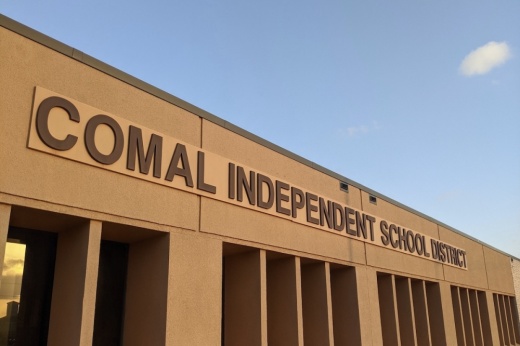The board of trustees voted to adopt the final version of the DOI plan during a regular meeting on April 27. Next, Comal ISD Superintendent John Chapman will notify the Texas Education Agency of the local innovation plan and the list of the six approved Texas Education Code exemptions.
Of the state's 1,026 school districts, 938 are DOIs, including neighboring New Braunfels ISD. Comal ISD began the process to become a DOI in November and appointed a District of Innovation planning committee in December.
Some of the six exemptions Comal ISD is submitting to the TEA would give the district more flexibility on determining class size, school start date, teaching certifications and attendance requirements.
The exemptions would be in place for five years, until the district reapplies to be a DOI and can at that time add or subtract other items.
“There's no reason to take any of these off [in five years]. ... Let's just say we should put in a whole lot more, but we're starting out getting our feet wet,” Chapman said.
Exemptions Comal ISD will be submitting to the TEA include class size and the requirement of notifying parents of exceeding state guidelines for class size of 22 students to one teacher.
“I do want to say we are unique at Comal ISD,” said Bobbi Supak, executive director of human resources and customer service for the district. “Many districts leave this open ended; we actually put the class sizes that we staff our campuses with."
The new class sizes the district would be allowed to reach before notifying parents or the board of trustees is 23-24 students to one teacher and 25 students to one teacher for Spanish immersion.
Another exemption Comal ISD will be submitting to the TEA is the ability for the district to hire an individual for a teaching role who does not have the appropriate teaching certification or permit. Supak provided the example of trying to hire an individual experienced in welding to teach a course through their Career and Technical Education program.
“If they want to come work with Comal ISD, they would have to pay a minimum of $5,500 to an alternative certification program to get their certification,” Supak said. “They could go to any of our neighboring districts that are Districts of Innovation; they would not have to pay anything because they can certify them in the district.”
According to the district, they will annually report to the board of trustees the qualifications of all uncertified teachers and would use this to staff hard-to-fill areas, career and technology courses, and dual credit courses. Background checks and training procedures would still be maintained for these individuals.
The district will also be pursuing the ability to determine the school start date and have more control on probationary contracts for teachers. Additionally, the district is pursuing greater flexibility for students struggling to meet minimum attendance requirements due to extenuating circumstances for class credit or final grades through DOI exemptions.
If the exemption is approved by the TEA, the district may have more flexibility in how school counselors are allocated throughout the district and to employ licensed professional counselors, social workers and similar professionals for the role while they complete the proper certification.
The DOI concept was passed by the 84th Texas Legislature with House Bill 1842 and gives traditional public school districts the flexibility available to Texas charter schools. Once the TEA reviews Comal ISD’s proposed DOI plan, they will notify the district if it’s approved.





